Born: 1933 (Salisbury, North Carolina)
Key Positions: Kidder, Peabody & Co.
Webster Management Corporation
Tiger Management Group (TMG)
Personal History:
Known during the 1980s and 1990s as the “Wizard of Wall Street,” Julian Robertson earned the best hedge fund record during this time. The compound rate of return for his investors during this time period has been reported as 32%. Due to this incredible growth, his fund, Tiger Management, became the largest hedge fund in the world for several years, reaching more than $23 billion in assets under management.
Robertson studied business administration at the University of North Carolina, graduating in 1955. His first job in finance after college was at Kidder, Peabody & Co. in New York City. He joined in 1957 and spent the subsequent 20 years there, developing a reputation as one of the firm’s leading stockbrokers. Later in his stint at Kidder, Peabody & Co., Robertson was named head of the firm’s money management subsidiary, Webster Management Corporation.
Robertson left Webster in 1980 to found his own hedge fund, Tiger Management Group, with a reported $8 million in assets. By 1996, following nearly two decades of stellar performances, Tiger had more than $7 billion in assets, making Robertson the worldwide leader in hedge funds. With his status as the strongest manager in the world came investors knocking down the door for business, and Robertson set the minimum investment at $5 million.
Like most hedge fund titans, Robertson experienced a downfall later in his career. By the late 1990s, Robertson decided not to enter into the tech-stock rush, calling it “irrational” investing. As a result, Tiger gradually saw its assets dry up, plunging from $23 billion to a closing value of $6 billion by 2000. Detractors of Robertson cite poor stock choices and large, unwieldy bets in risky areas as the trouble that ultimately sunk Tiger, although others feel that defections of high-level managers due to Robertson’s reportedly severe managerial style and temper may have had something to do with the downfall as well. Today, Robertson has retired from investing but maintains an active profile as a philanthropist.
Investment Philosophy:
Julian Robertson’s investment style has been described as highly personal and difficult for the average investor to adapt to his or her own purposes. Robertson famously made all investment decisions after receiving reports from his analysts at Tiger. Nonetheless, Robertson developed a reputation as a macro trader who followed global trends, bucked at the idea of using fundamentals, and focused on a “smart idea, grounded on exhaustive research, followed by a big bet.” Perhaps the lack of clarity and hard-and-fast rules in this framework was what ultimately led to Robertson’s downfall.
Noteworthy Publications:
- "Julian Robertson: A Tiger in the Land Of Bulls And Bears" by Daniel A. Strackman (2004)
Quotes:
"Our mandate is to find the 200 best companies in the world and invest in them, and find the 200 worst companies in the world and go short on them. If the 200 best don't do better than the 200 worst, you should probably be in another business."
"When Robertson is convinced that he is right," a former Tiger executive notes, "Julian bets the farm."
"Hear a [stock] story, analyze and buy aggressively if it feels right."
The Greatest Investors: Thomas Rowe Price, Jr.
-
 Investing
InvestingTop 5 Positions in John Griffin's Portfolio
Learn more about "tiger cub" John Griffin and discover the top five holdings in his portfolio. -
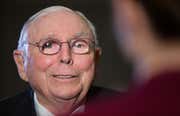 Investing
Investing3 Billionaire PMs That You Should Follow (BRK.A, KO)
Explore three portfolio managers, each with a personal net worth exceeding $1 billion, and discover similarities between their investment philosophies. -
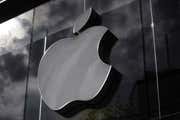 Investing
InvestingMany Funds Cut Apple in Q1 2017, But Buffett Didn't: Should You?
While many top funds reduced or eliminated their positions in AAPL, Warren Buffett maintained a major stake. What should outside investors do? -
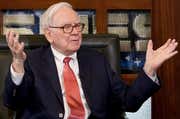 Investing
InvestingBuffett Doubles Down While Loeb Exits Apple Stake: 13F Filing
Apple saw some notable hedge fund departures, including the likes of Third Point and Elliott Management. -
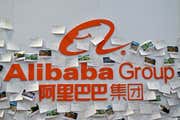 Investing
InvestingHedge Funds Skeptical of IPOs and Favored Alibaba in Q2: 13 Filings
13F trends show that hedge funds were leary of investing in popular IPOs, but that they tended to focus investments on Chinese e-commerce site Alibaba. -
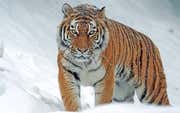 Investing
InvestingChase Coleman's Tiger Global 13F: Sold Alphabet in Q3
Chase Coleman's Tiger Global Management exited its position in Google's parent company, Alphabet. -
 Small Business
Small BusinessAthletes Who Make More From Endorsements Than Sports
When an athlete becomes a one-person brand, he or she can make more from endorsements than the sport he or she is famous for playing. -
 Managing Wealth
Managing WealthIs the Hedge Fund Over?
After decades at the top of the investment food chain, hedge funds may be in decline. -
 Personal Finance
Personal FinanceElizabeth Holmes: How She Became a Self-Made Billionaire
An overview of the 31-year-old woman who is successfully disrupting the $76 billion laboratory-diagnostic industry.



